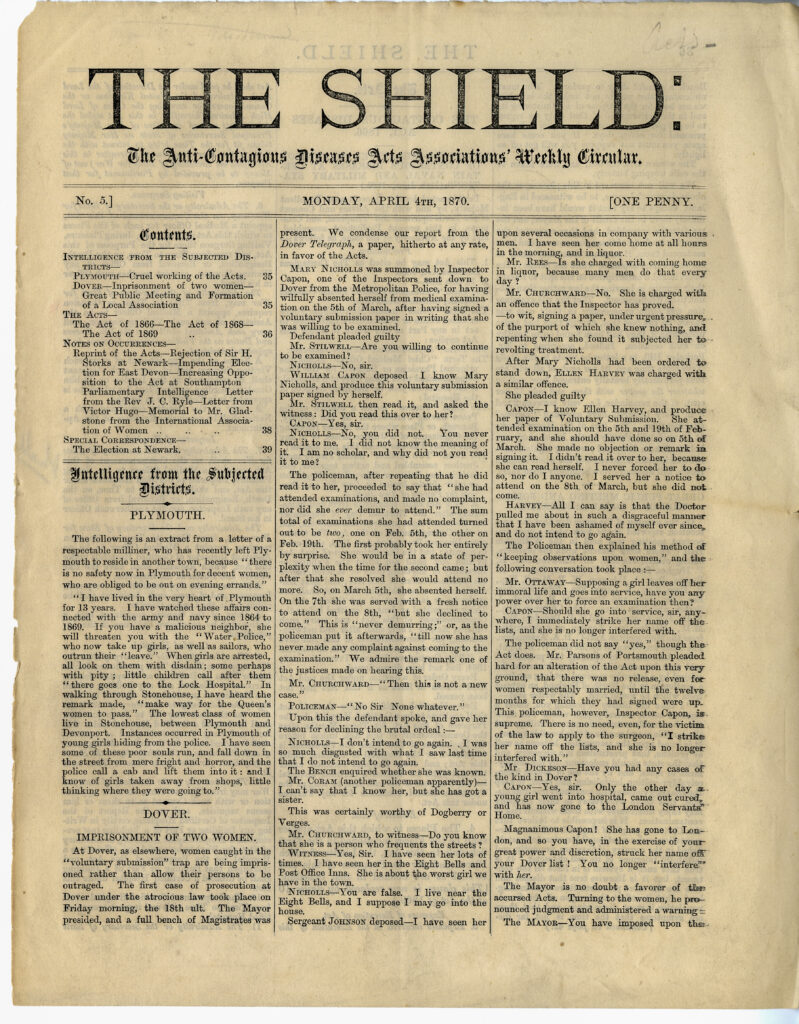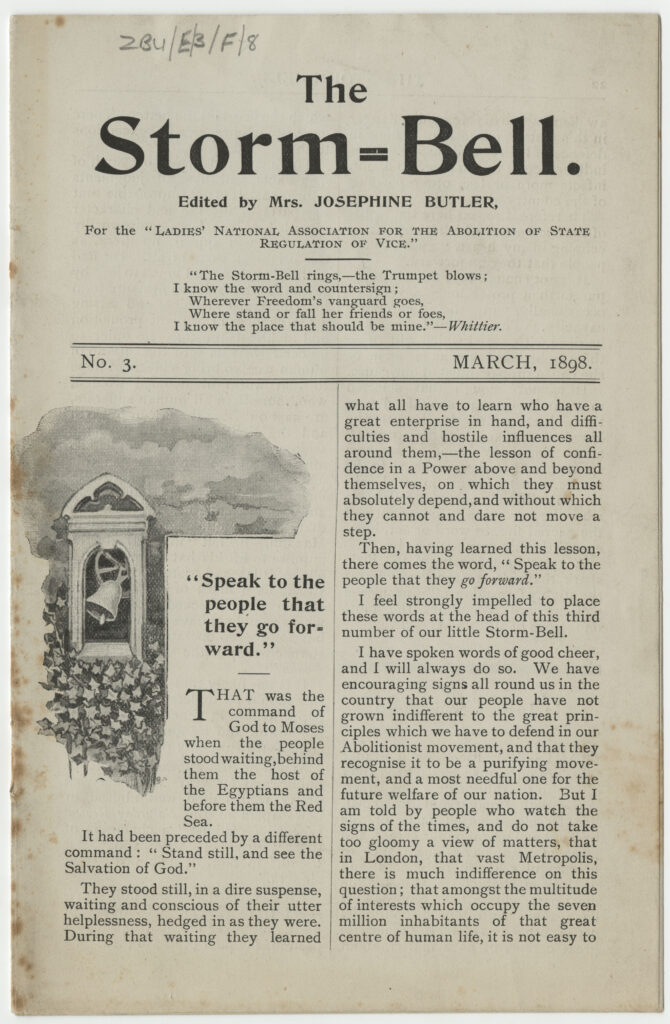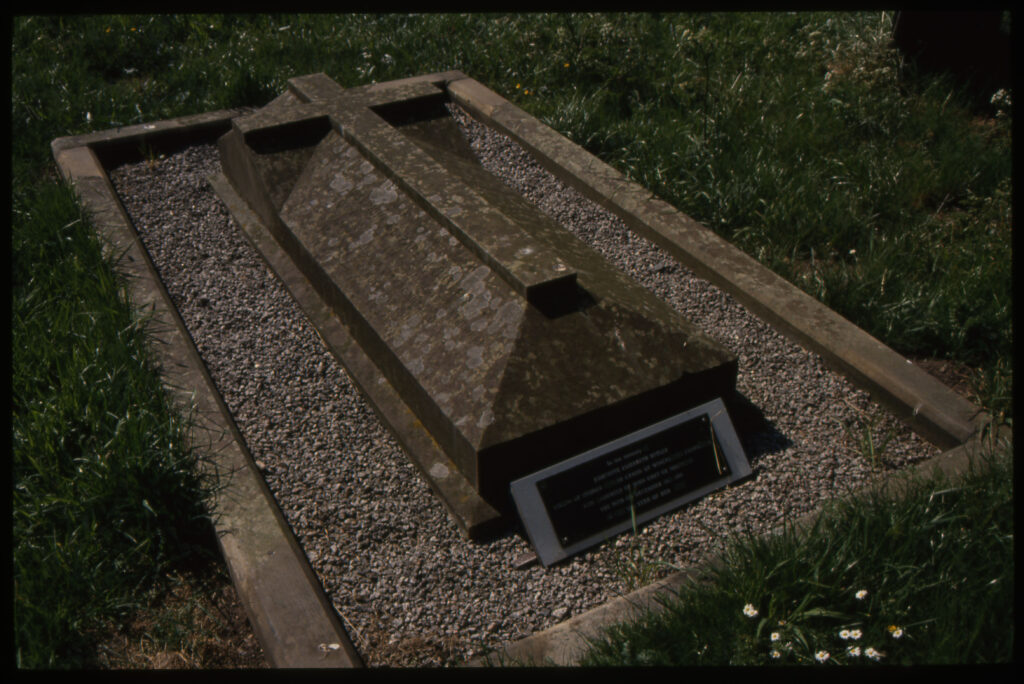Josephine Butler Timeline
A timeline of the life and work of Josephine Butler, alongside social causes and social reform during the 19th century.

Josephine Elizabeth Grey was born at Milfield Hill, Glendale, the fourth daughter of Hannah Grey, and land agent John Grey, an agricultural reformer, anti-slavery supporter, and cousin of Earl Grey of Howick.
Image: Photograph of a painting of Josephine Grey, no date, ref: NRO 06655/1/70
George Butler was an Anglican clergyman, the couple resided in Oxford where George was a Fellow of Exeter College, Oxford University.
Fourth child and only daughter of George and Josephine Butler, following sons George Grey, Arthur Stanley, and Charles [Charlie] Augustus Vaughan.
Required women suspected of prostitution to undergo compulsory invasive examinations for venereal diseases. If signs of diseases were found, women were sent to ‘lock hospitals’ until they were pronounced 'clean'. This applied to garrison towns and naval ports - Chatham, Colchester, Cork, Curragh, Portsmouth, Plymouth, Shorncliffe, and Woolwich.

Eva died tragically when she was only five years old, falling over the banisters of the upstairs balcony of the family home and landing on the tiled floor of the hall. The accident was witnessed by her brother Charlie, and it was her father, George, who picked up her body, removing her to a different room, where she died a few hours later, surrounded by her family.
Image: Sepia photograph of the memorial medallion featuring the profile of Eva [Evangeline] Butler by Alexander Munro, no date. Ref: ZBU E/3/A/10/4
The move was prompted by the death of Eva Butler. Josephine became involved in 'rescue work' with prostitutes and other 'fallen women' to help her overcome her grief.
The Act was extended to include Canterbury, Devonport, Dover, Gravesend, Maidstone, Southampton and Winchester.
The petition was brought to Parliament by Elizabeth Garrett and Emily Davies, and presented by John Stuart Mill MP. Josephine Butler was one of the signatories on the petition.
The pamphlet was entitled The Education and Employment of Women
The Act was extended to cover 18 locations. The Act also included the addition of any woman refusing to be examined would face 6 months incarceration or hard labour.
The Association was founded by Josephine Butler and Elizabeth Wolstenholme in response to women being barred from joining the National Association for the Repeal of the Contagious Diseases Act.

The Shield publication was a key campaigning tool of the Ladies National Association for the Repeal of the Contagious Diseases Act.
Image: CLU-PRE-JBS The Shield publication of The Federation For The Abolition of State Regulation of Vice no 5 4 April 1870
Founded by Josephine Butler to campaign for the legal rights of female sex workers, and to abolish the international trafficking of female sex workers.
The Act recognised spouses as separate legal entities and allowed women to own and control property.

Image: Studio portrait of George Butler. Ref: ZBU E/3/A/11/09
The Act raised the age of consent from 13 to 16, and made it illegal to use drugs, fraud, intimidation, or abduction to 'procure' girls under 18 for sex.
Josephine Butler briefly stopped public duties following the death of her husband.

Published by Josephine Butler between 1898-1900. The publication carried Josephine's views on prostitution in India.
Image: 'The Storm Bell' edited by Josephine Butler, March 1898. Ref: ZBU/E/3/F/8
Amidst her increasingly ailing health, Josephine Butler relocated to be closer to her eldest son George Grey Butler.
Image: Photograph of Josephine Butler with her family. Ref: ZBU N/1/2

She is buried at nearby Kirknewton.
Image: Photographic transparency of the grave of Josephine Butler. Ref: NRO 07174/5/1/29
This followed the amalgamation of the Ladies' National Association and the International Abolitionist Federation. The Association continued to oppose state regulations on prostitution and campaigned for numerous causes including child prostitution, sex offences, and trafficking.

The Josephine Butler Society continues their work in the present day. The Society describe themselves as "a pressure group to campaign and advocate for the safety of sex workers. It stands for Social Justice and Equality of all citizens before the law. It is not a rescue organisation."
Image: CLU-PRE-JBS Keeping The Flame Alight- A Brief History of the Josephine Butler Society 1870-2006


